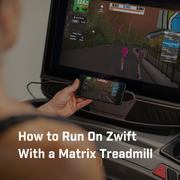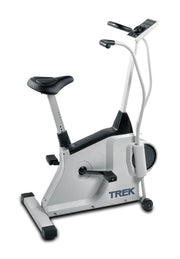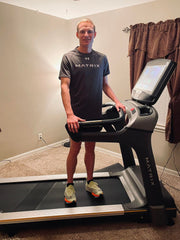It’s another one of those days. You begin your morning feeling motivated. You eat a healthy breakfast, take care of the family, get to work, and check things off your To-Do list. You’re on a good roll, but somehow the day flies by. You’re exhausted with no time left for your workout.
One of the top goals people have is to become healthier and lose weight. “I don’t have enough time” is the biggest excuse for not following through on goals. If it’s important to you, you will find a way. If it’s not, you will find an excuse.
Here are six steps to help you make time for what’s most important.
Photo credit: Tai Kerbs
1. Get clear on what's important.
Health is paramount to life. When we’re healthy we’re better people, spouses, parents, and employees or employers. To improve our health, we set goals, for example, “I want to get fit” or “I want to be healthier”.
These are general goals. They’re a good starting point, but still unclear. You don’t know where or how to start. You may also have unrealistic expectations about how much you can accomplish and how soon, leading to overwhelm or disappointment. Instead create a SMART goal.
SMART is an acronym for Specific, Measurable, Attainable, Realistic, and Timely. Let's refine "I want to get fit" into a SMART goal. I am taking three 20-minute online classes each week on Mondays, Wednesdays and Fridays at 7 AM, starting today through the end of the month.
Here's another example. Instead of "I will eat healthier," consider this: I am adding one fruit or vegetable to my lunch or dinner starting today through the end of the month. Then do your best to stick to your goal.
2. Organize your life around it.
Make it a part of your daily routine just like brushing your teeth or eating food. Plan it into your life. Say you decide to exercise three times a week. Think of it as a class session and choose the exact days and times for the class.
Next, organize your days around your training. The class you’ve chosen is at 7:00 AM so you decide to get up at 6:00. This should give you plenty of time to wake up and get yourself prepared for class. Class finishes at 7:45 and you give yourself an hour to clean up, shower and dress, make breakfast and eat, and start work at 9:00.
3. Schedule it.
For the next eight weeks, schedule that block of time for your training into your calendar. Once you add the new habit into your calendar it is real. Put it in your phone and on your computer. Use Day Planner, Google Calendar, iCal, or whatever else you use to plan important meetings.
Set a recurring reminder or alarm so you will not miss these meetings. Make it non-negotiable. It’s an important appointment for yourself that cannot be missed. When scheduling other appointments, you are not available on those specific days and times. Simply book around your calendar.

Image source: https://turningpointcentre.com/identifying-your-learning-style.html
4. Say it. Write it. See it. Do it.
Say your goal out loud and write it down every single day and make it visible. Write it on a sticky note and place it where you will see it clearly like on your refrigerator or your computer. This activates the VAK learning styles developed by Walter Burke Barbe and colleagues. V is for visual, seeing and reading your goal. A is for auditory, speaking and listening to your goal. K is for kinesthetic, touching and doing.
Engaging all three learning styles will help you accomplish your goals by engaging your senses. Research shows that you remember your goals better when you write them down. Also seeing your goal in writing is a very clear visual reminder. The more often you see, hear, and touch your goal, the more likely you will take action.
5. Target your training.
Did you know that you don’t need to work out for one hour each session to improve your endurance (cardiovascular fitness) or to lose weight? In fact, research shows that interval training, more specifically, high intensity interval training (HIIT) is the most effective way to burn fat and build your aerobic capacity. Intervals are defined as blocks of time. There are set intervals of work followed by rest.
A sample interval training workout would begin with a 5-minute warm up. The training section is 5 rounds of 60 seconds of work at 75% of your heart rate max, followed by 30 seconds active recovery at 60% heart rate max. Then finish with a 5-minute cool down. To elevate your intensity (heart rate) in this example, increase your speed and/or incline on a treadmill. When training on a bike, ClimbMill or elliptical, raise your intensity by adding more resistance and/or increase your speed (revolutions, steps, or strokes per minute).
If you’re looking to maximize the results of your training in minimum time, try Sprint 8. The Sprint 8 program is a 20-minute, HIIT workout that’s scientifically proven to boost energy, decrease body fat, and promote lean muscle. It consists of short bursts of 30 seconds of intense work followed by 90 seconds of active recovery.
A research study was conducted at the King’s Daughters Medical Center. The 22 female subjects performed 20 minutes, 3 days a week for eight weeks. Overall the group reduced body fat by 27%. They decreased body mass, fatty tissue, BMI, cholesterol, LDL, and triglycerides while increasing human growth hormone.
6. Have a backup plan.
No matter how focused we are, inevitably something comes up. We get too busy, the meeting runs longer, we don't have healthy options, we don't have time to buy food or workout and so on. What are you going to do?
Say your goal is: I am taking three 20-minute online classes each week on Mondays, Wednesdays, and Fridays at 7:00 AM, starting today through the end of the month. However, if something comes up, you have a backup plan to stick to your goal: If I’m not able to make a 7:00 class, I will do a HIIT session either on my lunch break or right after work.
You’re busy and have limited free time. To achieve your health and fitness goals, use your time more effectively. Get clear on what you want. Organize your life around it. Schedule it like an important appointment. Write down your goal every day. Do interval training and have a backup plan just in case your day doesn’t go as expected. You will achieve success faster and more efficiently by following these steps. Start today and experience better results!
_______________________________________________________________
About the Author

Audrey Lee, PhD, Matrix Master Trainer, USA
_______________________________________________________________
Disclaimer: This blog post is for informational and educational purposes only and does not substitute for professional medical advice. The above information should not be used to diagnose, treat or prevent any disease or medical condition. Seek the advice of your health care provider before making changes to your diet, daily activity, sleep or fitness routine and any questions you may have regarding your health or a medical condition. Matrix Fitness assumes no responsibility for any personal injury or damage sustained by any recommendations, opinions or advice given in this article. Always follow the safety precautions included in the owner's manual of your fitness equipment.











































